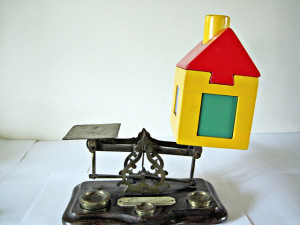Photo credit: TaxRebate.org.uk
The home appraisal is the one real estate-related process that can provoke a variety of emotions, ranging from positive to negative. While many are aware of what an appraisal is and its purpose, that awareness doesn’t always translate to a clear understanding of what is factored into the appraisal process. At the end of the day, an appraisal is an opinion derived from housing and neighborhood data.
PEMCO Valuations has managed over 132,000 appraisals nationwide since 2004 and based on feedback from some of our appraisers, we’ve decided it was time to shed some light on home appraisal myths.
Myth # 1: Home Appraisal = Home Inspection
This is probably the biggest myth and it’s understandable: home inspections and home appraisals are both used to determine a property’s condition as safeguards for the buyer and buyer’s lender. Appraisers and inspectors both inspect the property, but the similarities end here. The home inspector’s job is to poke and prod to uncover any and everything that’s problematic or potentially problematic. The appraiser’s job is to find the objective market value based on the condition of the home.
Myth # 2: The bigger the list of amenities, the higher the valuation
An investment of $100,000 in upgrades doesn’t equal to a $100,000 bump in appraisal value, especially when the amenities don’t exist in surrounding homes because appraiser simply doesn’t have nearby sales data to decide on the value of the amenities. This also applies to décor and staging, these are subjective and doesn’t get factored into the valuation. Their value judgement will come from quantifiable aspects: square footage, room count and other measurable data.
Myth # 3: More square footage means the higher the valuation
The value of the home is determined as if something like the surrounding homes were built on the appraised home lot. This means there’s no guarantee that a super-sized house on an average-sized lot in a modest neighborhood will appraiser for much more than neighboring homes.
Myth # 4: Amenities are the same
For instance, take two houses with similar square footage. Both have the same additions: a mother-in-law suite or home gym. One home has a two-car garage, the other has a garage that was converted into the mother-in-law suite or home gym. Removing one amenity (the garage) and replacing it with another amenity (the mother-in-law suite or home gym), isn’t an apple to apple comparison. Buyers look for homes with a garage for a reason, to use it as a garage, which the appraiser might assign a higher value to.
Myth # 5: Appraiser will match what the buyer will pay
Appraisals are not the result of exact science, it’s an opinion of the value of the home. This has nothing to do with what the buyer will pay or what the seller should accept. Buyers can not hire appraisers and therefore speak to them about valuation opinions on a house they are purchasing. This would undermine appraiser independence. The Dodd-Frank Act addresses appraiser independence, requiring arm length transactions between appraisers, lenders and buyers.
Myth # 6: The appraiser works for the buyer
Often, the appraiser works for an Appraisal Management Company (AMC) and the lender orders appraisals from these companies. Regardless if the seller and buyer have agreed on price, the appraisal would have to reflect the fair market value and cannot be influenced by any party.
Related articles
10 Ways to Prepare Your Home for an Appraisal
AVMs can be Utilized Along with Appraisers, Not Instead of
Home-Buyers Should Hire Their Own Appraiser
The Differences Between a Comparative Market Analysis and Broker Price Opinion
Sources:
Realtor.com. 6 Home Appraisal Myths You Need to Stop Believing Immediately
PEMCO Valuations. 9 Things You Should Know About Appraiser Independence


